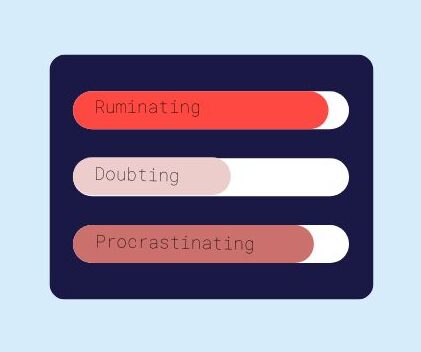In our first post, Social Anxiety, shyness, and introversion (1), we described the similarities and differences between social anxiety, shyness, and introversion; in addition, we described specific treatments that have been shown to be effective, as well as provided you with testimonials of different people who were identified to have social anxiety and received successful treatment for it.
Now, here is new information for you to read: Why do you continue to be socially anxious? What keeps social anxiety going? The answer is this: Social anxiety is all about what you do when you experience anxiety or discomfort in regard to a social situation. Please see below a graph that will help you to map your social anxiety; this graph captures the most common behavioral responses that people engage in before, during, and after a specific social gathering. Some of these responses may relate to you and others not; see what applies to your situation.
 Avoidance of social situations
Avoidance of social situations
Are you avoiding a particular social encounter because of the fear of being misjudged or making a fool of yourself? The degree of avoidance can vary from person to person and situation to situation. For instance, Derek, who struggled with social anxiety, avoided multiple situations from ordering his food in a restaurant to attending a lunch with a couple of acquaintances. Jessica avoided social situations that ranged from speaking in front of her class to initiating a conversation at her high school.
Negative predictions of the social situation
When Carlos was scheduled to give a presentation for his history class, he quickly thought about the upcoming presentation as, “It’s going to be really bad, people will think I’m stupid, they will make fun of me.” At the same time, when Jordan got invited for lunch with his potential new employers he immediately thought to himself, “They will think I’m stupid, incompetent, and I won’t get the job; my competition is definitely better than me.”
Negative predictions refer to all of those thoughts that simply predict what’s going to happen and that take a negative outlook on the situation. Do you ever wonder why you keep going back and forth with this particular type of thinking about an upcoming social event? If you look at these negative predictions the answers lie in the purpose of them; you continue to resort to them because those thoughts are trying to do one thing: reduce uncertainty. They’re seeking to prepare you for a potential bad thing that might happen in the next social gathering you have to attend.
Setting unrealistic goals
At times, people struggling with social shyness develop rigid beliefs about what constitutes a successful social performance, and they establish standards that are not realistic. In Carlos’s example, when he’s thinking about his presentation for his history class he may establish the following goals: I must present my topic without pausing, coughing, nodding my head, or using hand gestures.
Excessive focus on internal experience
Did you notice that when you experience anxiety or discomfort in potential social situations your mind starts focusing on your bodily sensations or what’s happening with your thoughts to the degree that you carefully monitor your internal reactions? This constant monitoring for the most part acts as a block between you and the people with whom you’re trying to interact; however, because you may hold the belief, “If I monitor my reactions they won’t notice I’m anxious,” you continue doing so. Somehow people believe that feeling anxious equals anxious behavior. For instance, Theresa usually experiences butterflies in her stomach when dealing with people, even when she has to order coffee; she believes that people will notice her anxiety and will judge her poorly, so she usually places one hand on her stomach and presses really hard so no one will notice her stomach anxiety; however, the harder she presses, the harder it is to breathe, and therefore her speech is also compromised.
Cognitive misappraisal (thinking traps)
Cognitive misappraisal, or thinking traps as I refer to them, are the type of thoughts that lead to problematic behavior because they’re seen as absolute truths, and people believe them right away. Individuals struggling with performance anxiety, shyness, or social anxiety tend to engage in multiple “thinking traps” including:
– Catastrophizing: Catastrophic thoughts are characterized by looking at the “worst outcome possible” in a social scenario; for example, “My presentation will be a disaster and that will be the end of my career.”
– Mind-reading thoughts: As a mind-reader you quickly assume that you know what people are thinking about you based on individual pieces of data, such as facial expressions and gestures. For instance, Joe thought that his colleagues were bored with him because two of them were looking around the room when he looked at them, so he quickly thought to himself, “They really think I’m stupid and boring, I can totally see it in their faces.”
– Labeling: Labeling thoughts are typical inferences you make about yourself based on a single piece of information. For instance, when Richard paused in the middle of his job interview, he quickly noticed the thought, “I’m a loser.”
– Discounting the positive: Does it happen to you that when someone compliments you, you quickly dismiss it and rather focus on all the things that went wrong?
Compensatory behaviors
When people struggle with social anxiety, at times they engage in compensatory behaviors in order to mask their discomfort and mask their perceived flaws. These compensatory behaviors could be present before or during a social gathering. For instance, Stephanie went out of her way to make sure that at the end of a social encounter people would laugh with her, so she would tell a joke or make up a funny story about herself; she was holding on to the belief that “if people associate my face with a smile they will like me more.” Anthony, on the other hand, as soon as he was scheduled for a 1-hour lunch with his colleague, made sure to rehearse every single word he was going to say so his coworker wouldn’t notice he was anxious.
Each one of these situations are examples of how people use compensatory behaviors during a social event like in Stephanie’s situation or Anthony’s case. Does it happen to you that when you’re invited to a dinner, you find yourself mentally rehearsing multiple times the types of questions you’re going to ask others, or practicing some of your responses to the degree that it seems that you are preparing for your social performance?
Safety behaviors
Safety behaviors prevent individuals with social phobia from experiencing anxiety in social situations; these behaviors are effective in the short-term but create negative consequences in the long run. For instance, Jocelyn makes sure to ask Jessica a lot of questions when she hangs out with her so Jessica won’t notice that she’s anxious; Jonathan makes sure to have a bottle of water at all times so he can “manage” his anxiety by drinking water when talking to others. Finally, Philip never attends a social gathering without having a shot of scotch so he can be more “relaxed” when dealing with people.
Other safety behaviors may be more subtle, such as avoiding eye contact, talking only to “safe people,” wearing a turtleneck sweater in case there is some blushing, etc.
Social skills deficits
Some individuals with social anxiety don’t have all the necessary skills to participate in social gatherings; for instance, they don’t know how to start a conversation, keep it going, assert themselves, present a disagreement, or set boundaries with others.
Mentally replaying the social scenario (post-processing)
At the end of a social situation, some individuals find themselves replaying mentally over and over the past social situation like an old tape; some therapists refer to this process as “processing of the social event.” For instance, Janet, after going out for a date, kept thinking about every word she said, her manners, her body posture and body language to the degree that every time she played her tape again she found herself more disappointed with herself for not performing according to her ideal expectation.
Reassurance seeking
Reassurance-seeking behaviors serve as other anxiety management strategies that individuals with social shyness or social phobia engage in at times. For instance, after Vivian presented a project at her history class, she quickly went to ask her instructor to ask not only about the quality of the presentation but also about her anxiety. She asked, “Did you notice my anxiety? Do you think people noticed it? Did I stutter?”
Self-blame (internalizing response)
Another response that is very common when individuals deal with social anxiety is “self-blame,” which is characterized by negative and/or derogatory thoughts about oneself. Every time Jacob attends a weekly meeting at his start up company in San Francisco, without taking a look at his performance during it, he quickly tells himself, “I made a fool of myself without a doubt, it’s all on me; if it wasn’t for my incompetence, my participation at the meeting would have being better.”
Subtle avoidance of social situations
Avoidance can be overt or subtle; overt avoidance behaviors are observable and for the most part easy to identify. Subtle avoidance involves discrete behaviors that have the function of avoidance but are not necessarily overt. Louis used to go to social gatherings only if his sister went with him. On the same note, Diana always carried a book when attending social situations that involved one or more people.
The above behavioral responses to social situations describe the most common actions you take either before, during, or after a social encounter. Each and every behavior, including mental behaviors, i.e., your thoughts, have a purpose. The purpose of all the described behaviors in a nutshell is to protect you from experiencing anxiety, and they absolutely work in the short-term. Unfortunately, as you may have noticed, the anxiety or discomfort you experience in social situations will continue to come back to you over and over so that no matter how hard you try to use the strategies you know, you will find yourself “trapped” in a loop. As I just noted, these behavioral responses work in the short-run, but in the long-term they are perpetuating a cycle the leads you to be isolated, depressed, and eliminates any possibility for you to move your life in the direction you want to be in––to having satisfying relationships, intimate connections, and constructive, productive relationships at work.
Now, it’s your turn to be a detective and complete the chart below by identifying your individual responses to social situations. In order to do this, please think about a particular social encounter in which you found yourself struggling; then, carefully think about what did before, during, and afterwards. Remember, you cannot modify or say “good bye” to a behavior without saying “hi” to it first.








